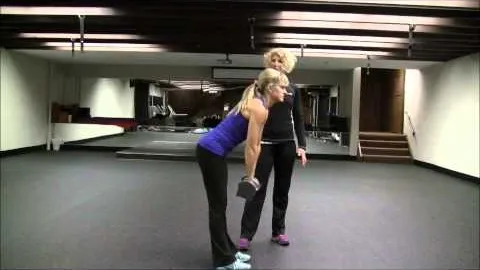
If you're looking to build strength, increase muscle mass, and improve overall fitness, incorporating compound exercises into your workout routine is essential. One such exercise that ticks all the boxes is the dumbbell deadlift.
The dumbbell deadlift is a powerful full-body exercise that targets multiple muscle groups simultaneously, including the legs, glutes, core, and back. In addition to its muscle-building benefits, this exercise also enhances grip strength and improves overall posture.
Full-body activation: The dumbbell deadlift is a compound exercise that involves multiple joints and muscle groups. This full-body activation makes it incredibly effective for building overall strength and power.
Functional fitness: Deadlifts simulate real-life movements like lifting heavy objects from the ground. By training your body to perform this functional movement pattern, you'll improve your overall strength and reduce the risk of injury.
Muscle development: The dumbbell deadlift primarily targets the glutes, quadriceps, hamstrings, and lower back muscles, making it an excellent exercise for developing strength and muscle mass in these areas.
Grip strength: Deadlifts require a strong grip to hold onto the dumbbells. Regularly performing this exercise can significantly improve your grip strength, which can transfer to other exercises and everyday activities.
Improved posture: The deadlift strengthens the core and lower back muscles, which are essential for maintaining proper posture. By incorporating this exercise into your routine, you can help alleviate posture-related issues and improve your overall spinal alignment.
Now that you understand the numerous benefits of the dumbbell deadlift, let's delve into the proper form and technique to maximize your results.
Setup: Begin by placing a pair of dumbbells on the ground shoulder-width apart. Stand in front of the dumbbells with your feet hip-width apart and toes pointing forward. Keeping your spine neutral, hinge at the hips, bend your knees slightly, and reach down to grip the dumbbell handles with an overhand grip.
Starting position: Ensure that your core is engaged, your chest is lifted, and your shoulders are pulled back. Your arms should be fully extended, and the dumbbells should be resting just above your shoelaces.
Execution: Keeping your spine neutral and your core braced, exhale as you drive through your heels, pushing the floor away from you. As you stand up, use the strength of your glutes and hamstrings to lift the dumbbells, straightening your knees and hips simultaneously.
Top position: At the top of the lift, your body should be fully extended, with your shoulders back and your hips pushed forward. Squeeze your glutes at the top of the movement to maximize muscle activation.
Lowering the dumbbells: To return to the starting position, begin by hinging at the hips and pushing your glutes back. Aim to lower the dumbbells back to the ground in a controlled manner while maintaining proper form.
To get the most out of your dumbbell deadlifts and ensure both safety and efficiency, consider the following tips:
Start with light weights: If you're new to deadlifting, it's important to start with lighter dumbbells to master proper form and technique. This will help avoid injury and set a solid foundation for progressing to heavier weights.
Maintain proper form: Throughout the exercise, keep your core engaged, your spine neutral, and your shoulders pulled back. Avoid rounding your back or allowing your knees to collapse inward as these can lead to injuries.
Progressively increase weight: Once you've mastered the exercise with light weights, gradually increase the dumbbell weight to continue challenging your muscles and promoting growth.
Vary your rep ranges and sets: To stimulate muscle growth and avoid plateaus, alternate between different rep ranges and sets. This can include doing higher reps with lighter dumbbells for muscular endurance or lower reps with heavier weights for strength gains.
Rest and recover: Deadlifts are physically demanding exercises that require adequate rest and recovery between training sessions. Allow your muscles time to repair and rebuild by incorporating rest days into your workout routine.
The dumbbell deadlift is a highly effective exercise for building strength, muscle mass, and overall fitness. By incorporating this compound movement into your routine, you'll not only develop multiple muscle groups but also improve functional fitness and posture. Follow the proper form and technique described above, and gradually increase weight to continue challenging yourself. Remember to prioritize rest and recovery to allow your muscles to repair and grow. Start incorporating dumbbell deadlifts into your workout routine today and witness the amazing benefits firsthand!
If you're looking for a gym, fitness club or yoga studio, you've come to the right place.
You can find information about gyms in your area. Browse catalog of gyms and find gyms with classes which are you looking for.
On gym page you can find simple information like address, phone or website. You can find list of available classes. You can check availability of personal training or small group classes. On place page you can also see information about open hours.
You can find gyms near you with amenities, courts, studios and equipments.
Use our map to find gym at your city or district.
In Gym Navigator you can find list of exercises with movies for many body parts.
You can browse exercises catalog and find exercises the best of you.
You can also find exercises grouped into workout plans, which you can use to improve you body. Each routine show you exercises one by one and give you possibility to count you progress and count down rest time.